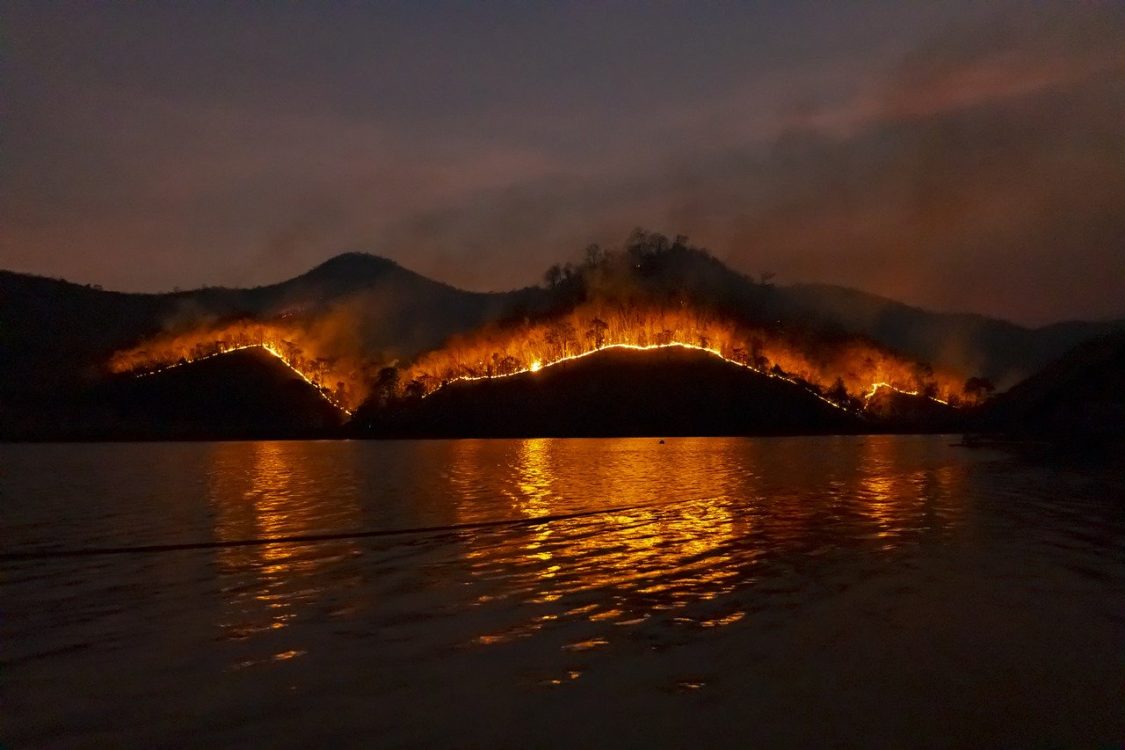The Australian bushfires have been burning since September 2019 and many animals are being forced out of their homes. Whether their species is being killed in the fires or by the smoke, or their habitats have been destroyed by the flames in the past five months, many Aussie animals are struggling. Most animals will survive the fires, but they fact that they may not have a home to go back to or nothing to eat is detrimental to their survival. Due to the fires, animals may not have anywhere to hide in the wild, consequently depleting their numbers further.
The wallabies, for example, will mostly survive the fires, but when they come back they will find that their habitats have been burned badly and that they will have no place to hide. They most likely wouldn’t have much to eat and would starve if it weren’t for Australian park service officials, who began dropping loads of sweet potatoes and carrots for the hungry animals on Sunday, Jan. 12. The service officials have dropped over 5,000 pounds of food and plan to keep going.
According to Australian Koala Foundation, koalas are in serious decline suffering from the effects of habitat destruction, domestic dog attacks, bushfires and road accidents. The foundation currently estimates that there are less than 100,000 koalas left in the wild, possibly as few as 43,000. In 2012 scientists classified the animal as vulnerable, but many organizations believe the koalas should be categorized as critically endangered. WWF-Australia says that koalas could be extinct as early as 2050. There are a lot of conflicting thoughts about what’s happening, but the fires are still burning, so only time will tell for the koalas.
Other marsupials have also had their habitats ruined, and consequently will most likely be hunted down by hungry wild cats or foxes. A mouse-like creature known as the kangaroo island dunnart was already close to extinction before the fires (roughly 500 left in the wild). Scientists are afraid that when the Australian bushfires end they will be extinct.
Greater gliders are a small marsupial with a tiny body and long tail that live in a forest and have many dens. These little creatures were already listed as vulnerable prior to the fires, but now their habitats and food sources have burned away. Although the greater gliders may migrate to live elsewhere in the Australian state Victoria, not all species of animals living in Australia have another place to go.
The black cockatoo is an all-black bird with red stripes on its tail. They’re native to western Australia and are also being affected by this unfortunate event. They will also mostly survive the fires but their habitats have been destroyed. These birds only eat the seeds of a certain type of tree, the Drooping Sheoak tree where they nest. Many of those trees have been burned and scientists are worried about this species. The black cockatoo was already classified as endangered and recently had a growing population, but now because of the bushfires the future remains unknown for the bird.
An additional animal that has been pushed out of their homes is the black-tailed antechinus. They were recently classed as a new species around five years ago, and their population has already been depleting due to rising temperatures. The fires are burning their habitats and food sources of insects and spiders, leaving the species hungry and homeless.
While many animals are being gravely effected by the Australian bushfires because of the smoke and flames, the true extent of the damage done to the forests and creatures of Australia is currently unknown, as the high flames and smoke make it too dangerous to enter the forests.
